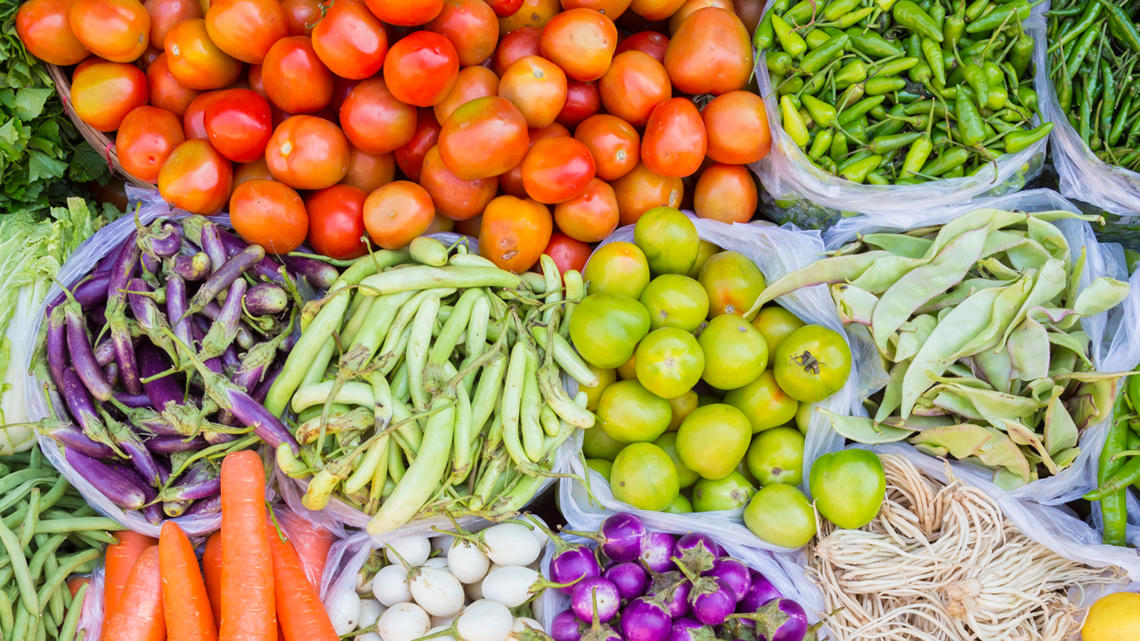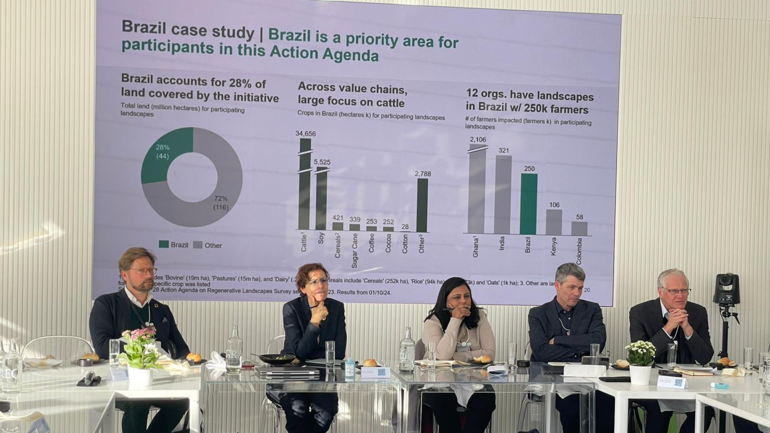After the success of the Paris Agreement, I can walk into any room shouting “2°C!” and everyone knows that I am talking about climate change. We have a problem, there is a science-based target to aim for, and we are implementing the solutions to solve it.
If I walk into those same rooms and shout “food,” people would just look around for lunch.
Yet as with climate change, food-related issues are entwined with every development challenge we face. Food insecurity, famine, hunger, nutrient deficiency, distribution and transport issues sit cheek-by-jowl with obesity, over-consumption, food loss and waste — not to mention the rise of diabetes in adults and now in children. While a child dies from hunger every six seconds, the global weight-loss industry generates close to $200 billion in revenue every year.
Our food system is broken. It contributes to climate change, water stress, desertification and ecosystem degradation. It’s also a vast contributor to global emissions. According to the IPCC, agricultural land covers up to 50% of the earth’s land surface and agriculture produces up to 12% of human-caused GHG emissions — while total emissions from agriculture, forestry and land use add up to around 25% of all anthropogenic emissions. And the FAO stipulates that if the emissions from global food loss and waste alone were counted as a country, they would come in third behind China and the US.
If we don’t change this, we have no prospect of achieving the SDGs or fulfilling the Paris Agreement. As the world population booms toward 9 billion in 2050, the stakes grow ever higher.
Many organizations and governments around the globe are tackling individual pieces of the problem, but no one has fully agreed on what the overall goals are. The result is good work done in isolation, but there’s nothing connecting the dots.
This must change. We need a shared vision for our global food system.
A set of goals similar to the “2°C” approach is our best way forward. A clear, science-based target for a sustainable and healthy food system would allow governments, business and civil society to align and focus their efforts.
I am enormously encouraged by the trail that Dr. Gunhild Stordalen and the EAT Foundation are blazing as they work to define the problem and mobilize business, policy and science to provide solutions. Bringing together these stakeholder groups is the first step in laying the foundation that will build a global, sustainable and healthy food system. The work of the EAT Foundation on mobilizing the global science community is aiming to create the “2°C” equivalent for the global food system.
Bringing the voice of business into this discussion is an essential part of moving forward, and WBCSD is excited by the possibilities of partnering with this innovative platform. When business has a well-defined goal, it catalyzes action.
In the last 18 months alone, business has mobilized unprecedented action around the clearly articulated 2°C goal for limiting climate change.
For example, through the Low Carbon Technology Partnerships Initiative (LCTPi), more than 150 companies and 70 partners from around the world have come together to deliver solutions that will accelerate the transition to the low-carbon economy, with the potential to deliver 65% of the emissions reductions we need to remain under the 2°C limit, while stimulating trillions of investment dollars and supporting 25-45 million jobs per year.
This model for action must be adapted to fix our global food system.
Just as business is now the best implementation partner for governments around the world as they strive to reach their commitments on the 2°C goal, business will be the best implementation partner for initiating change toward a global sustainable and healthy food system on a massive scale.
I look forward to this year’s EAT Forum as the catalyzing force for mobilizing action. This is the start of an important journey that will directly contribute to the Sustainable Development Goals and the Paris Agreement, and to the wellbeing of everyone on earth.
We’ve seen what’s possible when the world rallies behind a common goal.
It’s time to set one for food.
This blog post is part of a series produced by The Huffington Post and the EAT Foundation, in conjunction with the EAT Stockholm Food Forum (Stockholm, June 13-14, 2016). The third EAT Stockholm Food brings together some of the world’s brightest people in the fields of science, politics, business and civil society to shift food systems toward greater sustainability, health, security, and equity within the boundaries of our planet. For more information about EAT Stockholm Food Forum, read here.
Follow Peter Bakker on Twitter: www.twitter.com/MPB_WBCSDOriginally published on the Huffington Post, 9 June 2016








